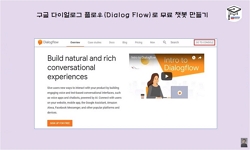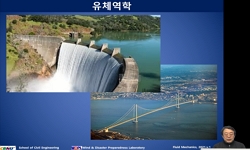Background : In traditional art museums, designers use various visual guidance strategies to direct visitors, optimizing their experiences in alignment with the artist’s vision and exhibition’s design. These strategies include exhibit placement, g...
http://chineseinput.net/에서 pinyin(병음)방식으로 중국어를 변환할 수 있습니다.
변환된 중국어를 복사하여 사용하시면 됩니다.
- 中文 을 입력하시려면 zhongwen을 입력하시고 space를누르시면됩니다.
- 北京 을 입력하시려면 beijing을 입력하시고 space를 누르시면 됩니다.
https://www.riss.kr/link?id=A108982714
- 저자
- 발행기관
- 학술지명
- 권호사항
-
발행연도
2024
-
작성언어
Korean
-
주제어
Virtual Exhibition ; FoMO ; Flow ; Wayfinding ; Visual Guidance ; 가상전시 ; 길 찾기 ; 시선 유도
-
KDC
658
-
등재정보
KCI등재,SCOPUS
-
자료형태
학술저널
- 발행기관 URL
-
수록면
209-225(17쪽)
- 제공처
-
0
상세조회 -
0
다운로드
부가정보
다국어 초록 (Multilingual Abstract)
Background : In traditional art museums, designers use various visual guidance strategies to direct visitors, optimizing their experiences in alignment with the artist’s vision and exhibition’s design. These strategies include exhibit placement, graphic design, and lighting. However, as virtual exhibitions grow in popularity, there’s a notable lack of studies on visual guidance within virtual museums.
Methods : In our study, 31 participants(17 males and 14 females) engaged with a virtual art museum through a display monitor, responding to various visual guidance stimuli, including fixed lines, fixed arrows, pointing arrows, and flying butterflies. These stimuli fell into two categories: World-referenced stimuli, which were centered on the user’s environment, and Screen-referenced stimuli, designed around the user’s display screen. Upon exploring the virtual museum, participants then completed a questionnaire probing their experiences of fear of missing out(FoMO), their reactions to the visual guidance(Visual Guidance Questionnaire, or VGQ), and their sense of flow or engagement with the exhibit. To analyze the gathered data, we employed the RM MANOVA, allowing us to empirically evaluate these constructs.
Results : In a comparative analysis of comparative analysis of methods to visual guidance in a virtual art museum, we found that: 1)The distinction between world-referenced methods of visual guidance, centered on the user’s perspective, and screen-referenced methods did not show a significant correlation with VGQ, FoMO, or Flow. 2)A comparison of the four methods of visual guidance showed significant differences in VGQ, FoMO, and Flow. For FoMO, participants felt less guided by a ‘fixed line’ compared to a ‘pointing arrow’ and ‘butterfly’(F= 8.31). For Flow, the score was higher when using the ‘fixed line’ than the ‘pointing arrow’ and ‘butterfly’(F= 5.38). Lastly, the VGQ results showed that using the ‘fixed line’ received significantly higher scores compared to the ‘pointing arrow’ and ‘butterfly’, and the ‘fixed arrow’ also received a significantly high score(F= 18.8). These results indicated that the way visual guidance in a virtual art museum affects the user’s experience in the museum, preventing them from becoming lost and allowing them to immerse themselves in the artwork. Moreover, the ‘fixed line’ method of guiding attention was found to be the most positive for experiencing the virtual art museum.
Conclusions : Based on the experimental results, our study proposes a new ‘flowing line’ visual guidance method for path guidance in virtual art museums. The ‘flowing line’ offers intuitive understanding of navigation without requiring users to interpret graphics or text, unlike traditional signage or maps used in virtual art galleries. It also represents the sequence of the exhibition through the flow of gradients, enabling sequential navigation and compensating for the shortcomings of the ‘fixed line on the floor’. Furthermore, The ‘flowing line’ is less forceful than the arrows traditionally used in visual guidance, and seamlessly integrates into the art museum without disrupting the appreciation of artwork. These findings provide foundational data that can be utilized in future virtual art museum planning, suggesting ways to enhance user’s art experiences by implementing efficient path guidance through visual guidance.
동일학술지(권/호) 다른 논문
-
Using Morphological Chart for Analysing Existing Designs
- 한국디자인학회
- Renk Hulagu
- 2024
- KCI등재,SCOPUS
-
- 한국디자인학회
- Soojin Jun
- 2024
- KCI등재,SCOPUS
-
Framework for Digital Transformation of Intangible Cultural Heritage: Chinese Paper-Cutting Art
- 한국디자인학회
- Yuan Huang
- 2024
- KCI등재,SCOPUS
-
Examining the Spatial Perception of Users of Verbally Generated 3D Virtual Space Visualizations
- 한국디자인학회
- Deny Willy Junaidy
- 2024
- KCI등재,SCOPUS






 DBpia
DBpia






